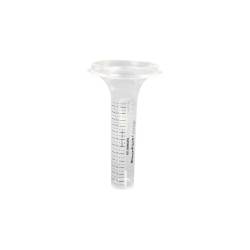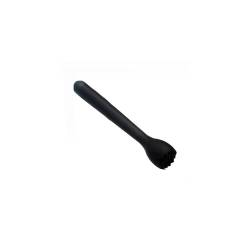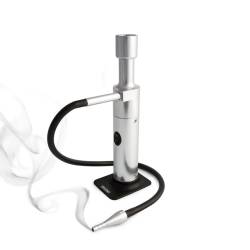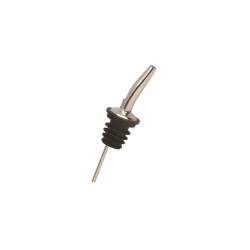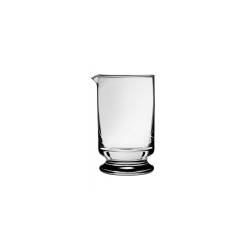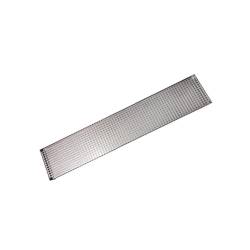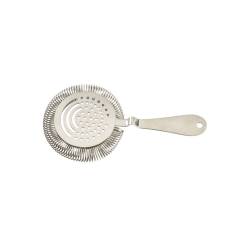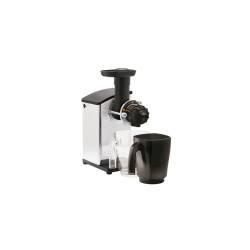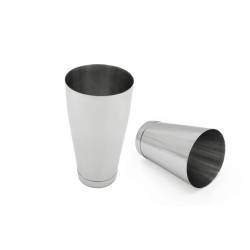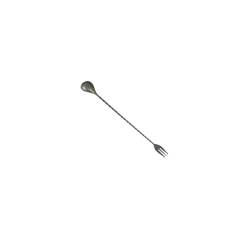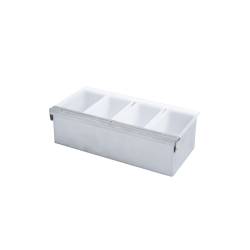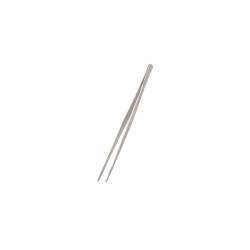Bar tools, back to basics
The covid-19 pandemic has changed purchasing priorities in pretty much every industry, and the world of bartending is no exception.
Past trends-extravagant shapes, shimmering colors, collectibles-have given way to the essential, the most functional, the evergreen. So let's go back to basics, rediscovering which bar tools are must-haves, the tools of the trade that are unfailing on any self-respecting bar.
>>> Read the RGLife in-depth article: Bar tools not to be missed from Barfly and Cocktail Kingdom.
The steel grill
Starting with the steel grates: we cannot properly speak of the bar mat because mat in English means 'mat,' but a drainage grate for work tools. At one time the rubber bar mats- practical, washable, inexpensive - were the most popular, but nowadays it is easy to find solutions in sturdy steel that can be customized, both in size and with your logo, that can meet the needs of all kinds of customers.
Remember that everything in your venue can be customized (even the trash cans!), to give it more character and that note of recognition that makes all the difference.
The shaker: boston or cobbler?
If you were to scroll through a photo album of bartenders who dabbled in flair in the 1990s, you would realize that the only model of shaker featured on the bar counter was the two-piece boston, steel + glass o steel + steel.
Similarly, in hotel bars, those where thirty years ago they worked in white tuxedos, you will notice in period photos a predominance of cobblers, much more elegant in use and above all 'safe'.
In fact, the boston must be made to match all its parts, closed perfectly and then reopened with a dexterity to which all professionals are now accustomed. To the cobbler, on the other hand, it is enough to apply the top cap to be sure of no leakage during shaking; they are also equipped with an internal strainer, thus excluding the use of the strainer.
The strainer
The strainer is a strainer ('strainer' for counter boomers ) for straining ice and solids from the shaker--whether boston or parisienne--or mixing glass while pouring into the glass. It can be found with finso without fins; the latter is certainly easier to adapt to the various shaker diameters, but the model with fins has a firmer grip.
Purists, those who want to make the drink as smooth as possible on the palate(very smooth), also use the double strainer, also known as the fine mesh strainer. Again, we are talking about a strainer, most often conical, that filters out what the strainer or the inner cobbler strainer cannot, giving a very smooth texture to cocktails. This is a tool whose use has experienced a significant surge in recent years, just like the tweezers.
Tweezers are not an option
Tweezersstraight,curved, short,long: whichever model you are most comfortable with, you must keep in mind that by now the bartender's tongs is an indispensable tool.
The first bartenders began to use them as a quirk, for more elegance at work and in their movements, but hygiene and food safety must always come first, so avoiding touching the drink garnishes and accompanying sides with your bare hands is a must and no longer just recommended.
Jigger, the countertop measuring cup
The cocktail measuring cup , universally known as the jigger, is used to dose ingredients to make a perfectly balanced drink.
Giorgio Negri, owner of RGmania, says,"If you had talked about using a jigger in the early 2000s, you would have been taken for a bartender who was incapable of doing your job, because you were dosing everything by eye, with only the help of metal pours or, if you were learning the trade, pour checks. There was only one model of jigger, and you couldn't sell that either. Now you can't do without it and they know it well in our warehouse because, from a very small space, in the last ten years the jigger department has come to monopolize an entire shelf."
The measuring cup is a 'fad' that has come down to us because of a matter of British and American regulations, where the consumption of alcohol with respect to the quantity purchased is much more rigid, controlled and punished in case of contraventions than in Italy. Regardless of the origin, however, it must be admitted that the use of the jigger is recommended to ensure service excellence.
Metal pour: forever and ever
There are those who think that, with the advent of jiggers, it was the metal pour, but nothing is more wrong.
In fact, there are dozens of models and they are increasingly indispensable to ensure a continuous but slowed flow out of the bottles, a key factor in working neatly and at speed.
Juicers and more, the plus of freshness
If for decades syrups, concentrates and packaged juices have taken the lead among the most widely used ingredients for cocktails, today the use of fresh, more genuine ingredients obtained from express processing is favored. Hence the squeezers- useful and inexpensive, quick and practical - are now must-have tools on the bar.
Then if you are among those who want to offer only fresh juices, then on our site you will find a wide selection ofextractors,centrifugese juicers,here an example- the economic calculation in favoring these machines benefits you.
Mixing glass: the delicacy
The mixing glass was created to mix drinks more delicately than the classic shaker glass. An example of a cocktail mixed in the mixing glass is the Dry Martini (although 007 insisted on ordering it shaken with vodka and not mixed with gin, but that's taste...).
It is a pitcher with a spout, of which we have seen many variations come about over the years; the best-loved have undoubtedly been those with a Yarai cut of Japanese origin, but also the models from the Calabrese from Urban Bar.
Here, too, there has been a return to the origins, with a preference for the smoother models, thick and reliable.
Bar spoon, the mixing spoon
It sounds like a very light definition, but it is true: the mixing spoons, such asthis model, were created to help bartenders in their work, but they are nothing more than long spoons.
Of bar spoons exist with small pestles, with forks e tabs decorative, very long o shorter, but long enough to be used in shakers or mixing glasses, not only for mixing but also for cooling. It is up to you to choose the style, as long as it is ergonomic, for the most practical and efficient work possible.
Muddler or pestle
There's no use getting around it: you either love muddlers or you hate them.
If you belong to the latter category we feel sorry for you, because you will be forced to deal with someone who will sooner or later ask you to serve them one, so it is always better to have a pestle, also known as a muddler, here is an example, even of the simplest possible type.
Condiment caddy and bar caddy: qualities and differences
Finally, the underrated but always useful condiment holders and bar caddies.
I condiment holders, the condiment holders, are trays with internal dividers, equipped with lids so you can prepare your garnishes-usually olives and orange or lemon slices-in advance to work quickly at serving time.
I bar caddy lastly, they are still trays, but they are not used to hold food, but rather straws, napkins, wooden stirrers and other serving utensils that help with serving and therefore should be kept handy.
Bar tools, rely on RGmania!
We at RGLife hope we've given an adequate overview of the essential tools behind the bar counter, but what to choose next is part of your job, how you've built the drink list and what footprint you've given your establishment. Some people can't do without a specific type ofsmoker, others of thefoam kit, then there are those who work only with thesoda siphon, those who want to keep home made ones on the counter in thedash bottlesand those who need to keep them in the refrigerator inside thespeed bottles.
These are just the basics, RG Commerciale with its forty years of experienceis alwaysat your disposal to accompany and advise you in your purchases.



